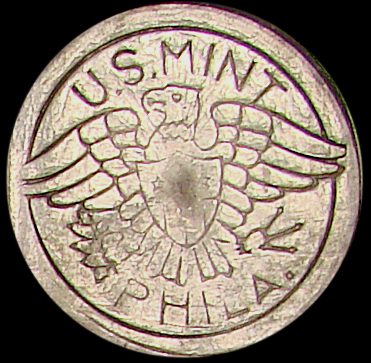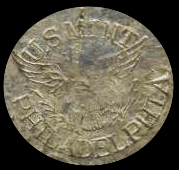The Philadelphia Mint was the very first United States Mint and dates to the Coinage Act of 1792 which established both the United States Mint as well as money standards for the United States. The Olde Mint (original Mint) was the very first new building constructed by the United States Government. By the time silver ingots began production at the United States Mint Philadelphia in 1946, they were in the third building pictured above, where operations began in 1901.
A very interesting look at the history of the third Philadelphia Mint building, now occupied by the Community College of Philadelphia, can be found on their website at www.ccp.edu/celebrating-50-years/looking-back/timeline-college-history/history-mint
Without United States Mint Philadelphia records, a completely accurate story of silver ingots produced there is impossible to tell, but given the extreme rarity of United States Mint Philadelphia silver ingots, some of the stories I have heard over the years are very believable. I’ve always heard that production was very limited which is supported by the extremely low number of examples in circulation and the span of serial numbers in the registry that only range from No. 3 to No. 308. Another story I’ve heard is that distribution was limited to licensed dealers and jewelers. This story, while not substantiated, is supported by the lack of any information about ingot sales or distribution like what can be documented from both the U.S. Mint San Francisco and New York Assay Office.
The majority of United States Mint Philadelphia silver ingots are dated; dates that I have seen so far include 1946, 1956 and 1960. Three different hallmarks can be found on U.S. Mint Philadelphia silver ingots dated 1946 and I’ve identified them as Type I, II and III, based on their appearance in numerical sequence of first year’s ingot serial numbers.
Much of this information provided by Ken’s archived site at: https://web.archive.org/web/20220117061819/https://silveringots.com/philadelphia/philadelphia-mint-intro
The hallmark used for Philadelphia silver ingots consist of three total types as seen below:



Left to Right: Type 1, Type 2, Type 3 U.S. Mint Philadelphia Hallmarks.
The 5 oz to 10 oz class is actually the most common of all weight classes and make up over one half of the entire United States Mint Philadelphia Registry. Having said that, the fact that only 25 exist in the United States Mint Philadelphia Registry still makes them among the most rare United States Government silver ingots in existence.
There is a good bit of variety in shapes and sizes within the 5 oz to 10 oz class; apparently fragments were not beyond stamping. Among the standard like those pictured above, they measure 1.35 inches by 2.50 inches within tenths.
It is not uncommon to find multiple hallmarks on a single ingot with obverse and reverse not matching. Throughout the 5 oz to 10 oz class, fineness is always 999. Melt No. 10 appears on almost all ingots in this weight class as well.
The United States Mint Philadelphia silver ingots in the 20 oz to 30 oz class are the most consistent in shape as well as dimensional height and width of all United States Mint Philadelphia ingots. The varying thickness results in the different weights but all that I have seen to date measure 1.60 inches by 4.00 inches within tenths. Because the molds are tapered, my dimensions are taken from the obverse faces which remain more consistent.
These ingots in the 20 oz to 30 oz class are also the most consistent with stampings.
- 12 oz and under: 28
- 25 oz class: 16
- Over 100 oz class: 6
The most recent count is there are approximately 51 known Philadelphia Mint ingots ranging in dates from 1946 all the way to 1960.
That number will likely grow to 60 or so over the next few years as more ingots are re-discovered and others come out of hiding. Only 8 of the current known ingots are not dated.
